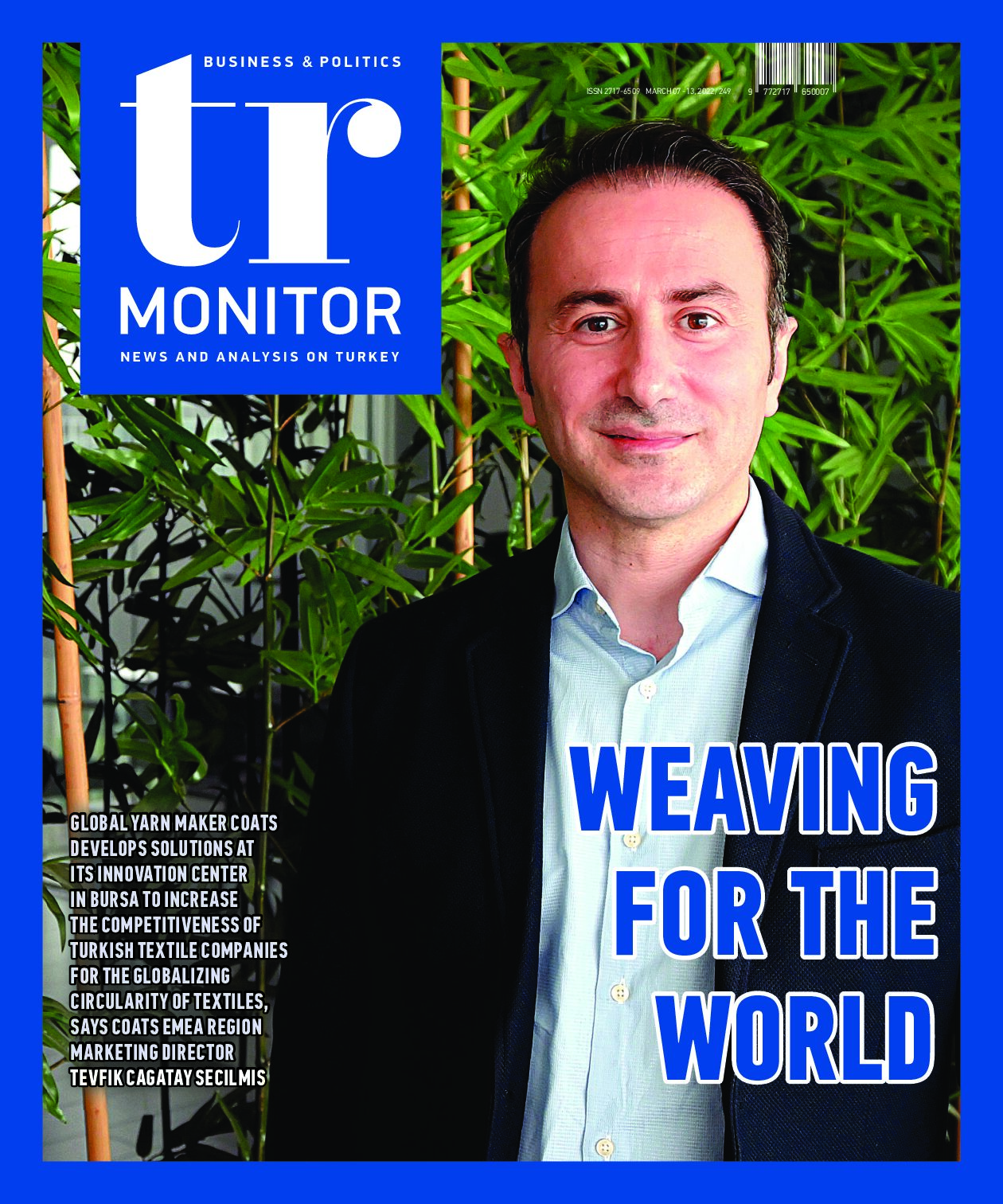By DIDEM ERYAR UNLU
Coats, one of the world’s leading industrial yarn companies with its 260-year-old history and innovative culture, operates in 70 countries today and is in a position to offer its customers not only products but also innovative solutions focused on sustainability.
Having been in the Turkish market for 70 years, the company operates out of its production facility in Bursa as Coats Turkey. The facility manufactures sewing threads, zippers, and complementary accessories used in the fashion industry, as well as high-tech performance products for sectors such as personal protective equipment, home textiles, furniture, outdoor, transportation, telecommunication, energy, and fast-moving consumer goods.
One of Coats’ one of three global innovation centers is located in Turkey, at its Bursa facility. The Europe, Middle East, and Africa (EMEA) Innovation Center, which was established in 2019 on the 50th anniversary of the Bursa factory, is the result of an investment of USD 2m. Closing the year 2021 with 55% growth in Turkey, Coats Turkey employs approximately 1,000 people.
We all know that the textile sector is the sector with the second-highest carbon footprint after oil. A significant transformation is taking place in the textile industry, where the use of energy and raw materials is high, especially considering Europe’s carbon-neutral target. The big brands in the textile industry are focused on sustainability in their production processes, product design, and social impact. Therefore, a key element of Coats’ business strategy is sustainability, according to Tevfik Cagatay Secilmen, Coats EMEA Region Marketing Director, who spoke about the transformation of the industry
True global partner for the textile industry
Coats Turkey holds a special position for the company, being the only facility that carries out all stages of yarn and zipper production in a single location. “We produce yarn and zippers from Bursa for the world,” said Secilmen, adding that opening the EMEA Innovation Center in the same complex as this factory was a strategic decision. Coats Turkey alone undertakes 40% of the total production volume in the EMEA region. For this reason, a significant portion of the company’s global investments is made in Turkey, according to Secilmen. “We are developing solutions to increase the competitiveness of Turkish textile companies in the globalized trade and supply environment,” he said defining the company as a “true global partner of the textile industry.”
Cyclical model in textile
Secilmen is aware that globally the textile industry is one of the most damaging sectors for the environment, causing 20% of global environmental pollution alone. A truckload of textile products is thrown away every second, he said. Less than 1% of the materials used in clothing production are recycled for use in new products. That’s why the industry is going through a transition into a circular economic model, as many sectors are due to global climate change and its effects. For this, environmentally sensitive, innovative practices, which may not have been used until now, need to be applied, he stressed.
The circularity emerged as an alternative to the existing production methods of textile products, he said detailing the cyclical model: “It is based on the principle of designing processes that will remove waste and environmental pollution from the system, extending the economic life of clothes by extending the time they can be worn, and recycling and reprocessing products into new products instead of making them waste.” Since Turkey is in a strategic position in textiles as the world’s fourth-largest fabric exporter, it should prioritize circularity.
Designers have a responsibility
One of the most important aspects to consider in circularity is product design, according to Secilmen, who thinks that designers hold great responsibility for this. “The textiles of the future must be designed to be easily recycled and reused. Clothing that is too worn out to be reused should be considered as a raw material input for a new cycle of use,” he said. Many brands are trying to develop more circular designs during this challenging and somewhat complex transition period. However, he added, “We can say that there are many challenges ahead regarding circular models and clothing recycling due to the lack of technology, infrastructure, and supply chain.”
There is still a long way to go in terms of recycling
As only less than 1% of the fiber currently used in textile production is recycled at the end of its life to be used in new textile products, there is still a long way to go in terms of recycling. “The different materials currently used in clothing are often separated from each other by the hand and end up in landfills or incineration plants instead of being recycled. That’s why we believe that circularity in the industry starts at the design stage of the garment, and we think that each link of the entire value chain should do its part.”
EcoJourney roadmap
Therefore, the clothes of the future need to be designed for easier recycling. Coats is committed to contributing to this in three ways, Secilmen said. “Firstly, it is very important that the sewing threads are compatible with the fabric in terms of material type, so that recycling can be achieved using the same chemical process as the fabric. Second, there need to be threads that facilitate easier and cost-effective removal of the seams. Finally, the yarn needs to be produced using recycled raw materials as much as possible,” he detailed. Coats produces a sewing thread called EcoRegen as part of its EcoJourney roadmap. “It is an innovative sewing thread that minimizes labor-intensive processes and supports the circular economy. Consisting of 100% Lyocell fiber obtained from sustainable wood pulp, Coats EcoRegen is completely biodegradable within six-to-ten weeks due to its cellulosic origin,” he cited.
Cooperation is critical for circularity
If the textile industry wants to achieve industry-wide goals and make rapid progress in sustainability, sector players have to work together, according to Tevfik Cagatay Secilmen, Coats EMEA Region Marketing Director. “Collaboration is essential not only for us to take bold steps as Coats, but also for making broader progress. As an industry, we are advancing on a complex journey. None of the actors in the industry can achieve circularity on their own. Therefore, if we want to complete the cycle, we must establish collaborations that will enable us to exist outside of our normal field of activity,” he said.
Coats will stop using polyester and nylon by 2030
All Coats products will be manufactured without using petroleum-based materials such as polyester and nylon by 2030. Additionally, 70% of the energy consumed worldwide by Coats will be obtained from renewable sources by 2030. The company has already successfully started to launch its environmentally friendly products with demand from leading global customers. However, this is not enough for Coats. “We want to make further strides, partly by using more recycled materials in our products and partly by innovating for new solutions such as new biomaterials that can replace existing materials,” Coats EMEA Region Marketing Director Tevfik Cagatay Secilmen said.










